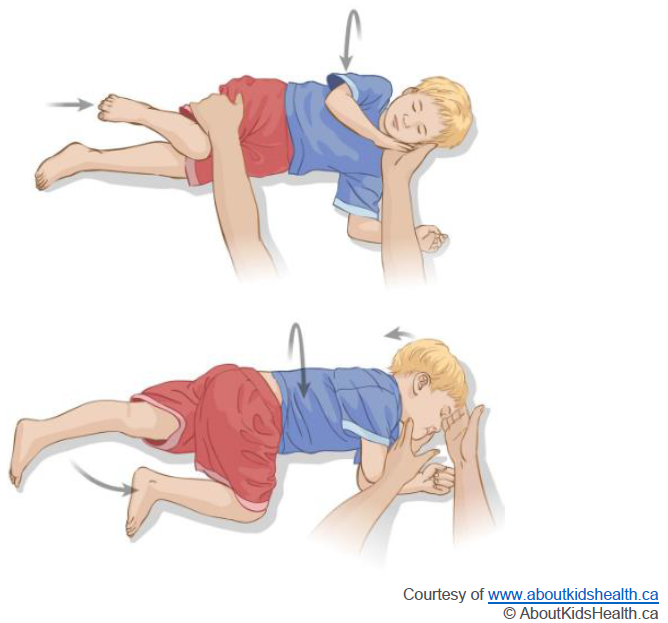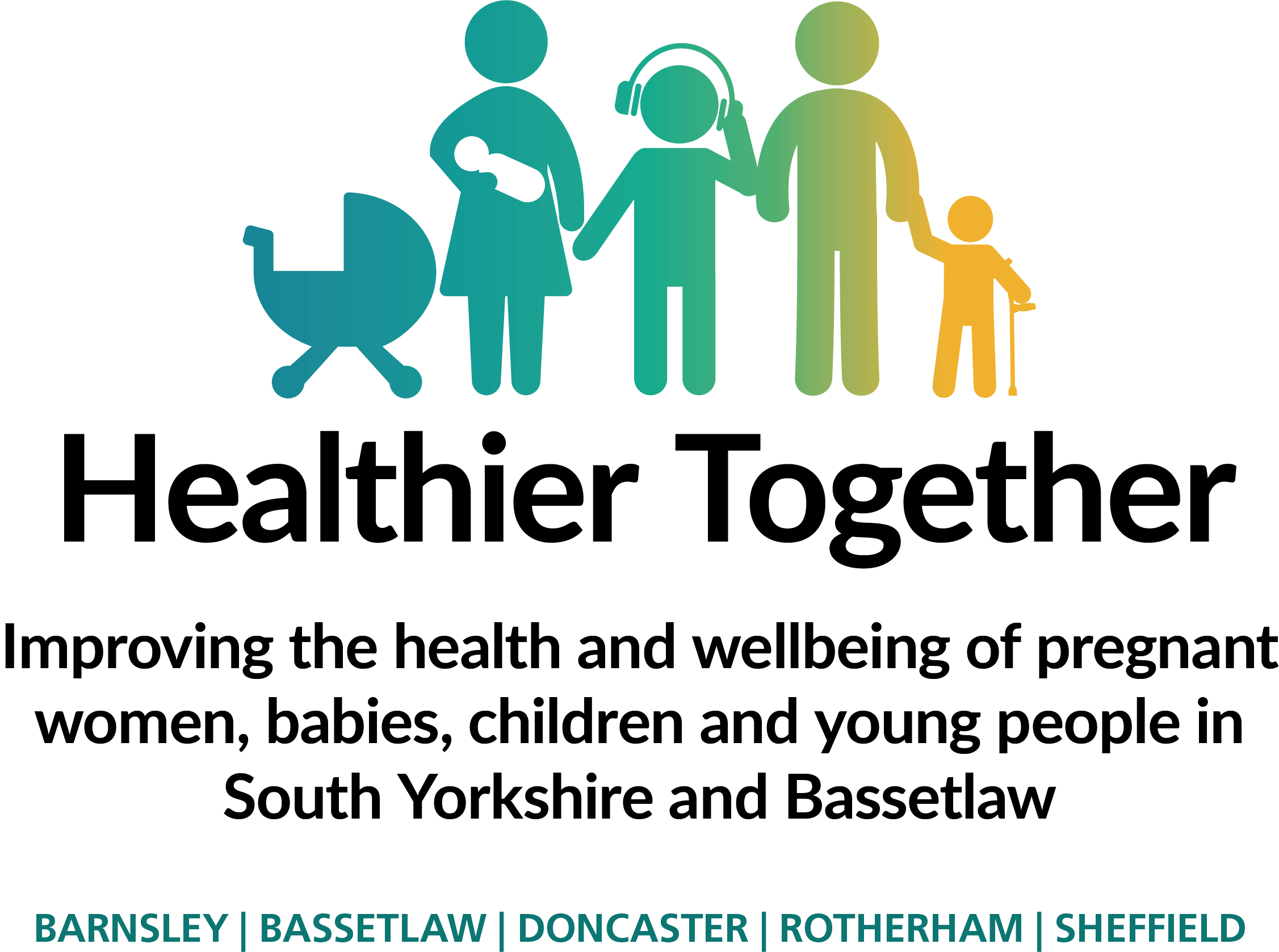Seizures
Seeing a child or young person having a seizure can be frightening. Most seizures do not cause serious harm. The commonest type of seizure in children is a febrile convulsion – this is a seizure associated with a high temperature. This sort of seizure tends to occur in younger children. Seizures sometimes occur without a fever (afebrile seizure). If your child has had only one afebrile seizure, it does not always mean they have epilepsy. Many children will never have another one.
First aid for a convulsive seizure:
A convulsive seizure is where the child is stiff or shaking. The information below can help you to focus when your child is having a seizure. It can help you to give first aid to keep them safe:
Do
• Stay calm
• Protect them from injury (remove harmful objects from nearby)
• Cushion or gently hold your child’s head to protect them from head injury
• Note the date and time the seizure started – if stiffness and / or jerking continues for 5 minutes or more you should call 999 for an ambulance
• Turn your child onto their side, into the recovery position (see below) as soon as you are able (as shown in Image 1). This can help with their breathing and help if they vomit or have other types of fluid in their mouth. Some noisy breathing and slight colour change is common
• If possible, try to video the seizure on a mobile phone as it can provide a lot of useful information to your child’s doctor or nurse. Video can help confirm the type of seizure which then helps decide which tests and treatment may be needed. Try to capture the whole child in the video, say out loud what you are seeing and show how they respond to you
• Stay with your child until they are fully recovered
• Your child may be confused, drowsy or fall asleep after a seizure – reassure them if they are confused, let them rest or sleep if they are drowsy, make sure you keep an eye on them until they are fully recovered
Do not
• Restrain or restrict your child’s movements
• Move your child unless they are in danger
• Put anything in their mouth
• Give your child anything to eat or drink until they have fully recovered
Call 999 for an ambulance if:
• The stiffness and / or jerking continues for 5 minutes or more
• One seizure follows another before your child has fully recovered
• Your child is injured, or you are worried about their breathing
Moving a child into the recovery position:

When should you worry?
If your child has any of the following:
- Is under 6 months of age
- The first time your child has a seizure, you should call an ambulance
- Has another seizure in the current illness lasting more than 5 minutes and/or does not recover rapidly afterwards
- Becomes extremely agitated, confused or very lethargic (difficult to wake)
- Becomes pale, mottled and feels abnormally cold to touch
- Is going blue around the lips
- Develops a rash that does not disappear with pressure (the ‘Glass Test’)
- Is under 3 months of age with a temperature of 38°C / 100.4°F or above (unless fever in the 48 hours following vaccinations and no other red or amber features)
- Has weakness of the arms or legs, visual difficulties (double vision) or difficulty speaking after the seizure has stopped
You need urgent help
Go to the nearest Hospital Emergency (A&E) Department or phone 999
If your child has any of the following:
- Has another febrile convulsion (less than 5 minutes) in the current illness
- Remains drowsy or lethargic more than an hour after their seizure
- Seems dehydrated (sunken eyes or not passed urine for 12 hours)
- Is becoming drowsy (excessively sleepy) or irritable (unable to settle them with toys, TV, food or picking up) – especially if they remain drowsy or irritable despite their fever coming down
- Is 3-6 months of age with a temperature of 39°C / 102.2°F or above (but fever is common in babies up to 2 days after they receive vaccinations)
- Continues to have a fever of 38.0°C or more for more than 5 days
- Seems to be getting worse or if you are worried
You need to contact a doctor or nurse today
Please ring your GP surgery or call NHS 111 - dial 111
We recognise that at peak times, access to a health care professional may be delayed. If symptoms persist for 4 hours or more and you have not been able to speak to either a member of staff from your GP practice or to NHS 111 staff, then consider taking them to your nearest Emergency Department
If none of the above features are present
Additional advice is also available to young families for coping with crying of well babies – click here
Self care
Continue providing your child’s care at home. If you are still concerned about your child, call NHS 111 – dial 111
Seizures associated with fever (febrile convulsion)
A febrile seizure is a convulsion that occurs in some children with a high temperature (fever). Although it can be extremely scary the first time you see your child have one, most of the time they are not serious. Most occur with common illnesses such as ear infections, colds and other viral infections. Full recovery with no permanent damage is usual. The main treatment is aimed at the illness that caused the fever.
Who gets them?
- They occur in about 1 in 20 children, most commonly between 6 months – 3 years of age
- They often occur on the first day of an illness associated with fever. There appears to be no connection between how high a child’s fever is and whether they have a seizure - they can occur even with mild fevers
- Most children will not have another seizure during the same illness
- 1 in 3 children who have a febrile convulsion may go on to have further febrile convulsions in the future. This is more likely if other members of the family have had febrile seizures
- Febrile convulsions are not epilepsy. Regular treatment for prevention of future seizures is usually not necessary. There is a small risk of your child developing epilepsy in the future and many parents worry about this, however, most children who have childhood simple febrile convulsions grow out of them and do not develop epilepsy
- If your child has had a previous febrile convulsion, has a clear cause for their fever, their seizure stops quickly and they are back to normal soon after, they may be cared for at home. The first time your child has a seizure, you should call an ambulance
- Once they have been examined, if a cause is found and your child is well, it may be appropriate that they are discharged to continue recovering at home
Seizures not associated with fever (afebrile seizures):
If your child has had only one afebrile seizure, it does not always mean they have epilepsy. Some children will never have another one. In addition, children can have events that look very similar to a seizure, but they are not; these include faints, tics, day dreams, sleep disorders and breath-holding attacks. However, if your child has more than one seizure, they will need to investigated for possible epilepsy.
What should you do?
- When the seizure stops, you can give them paracetamol (calpol) or ibuprofen. However, there is little scientific evidence to suggest that this will stop them having a further febrile convulsion. Always follow instructions on the bottle and do not exceed daily maximum doses
- Tepid sponging is not recommended – it does not reduce fever and may cause your child discomfort
How long will the symptoms last?
- In most cases, children with simple febrile convulsions appear dazed and their eyes may roll back
- Their bodies may go stiff, their arms and legs may twitch or shake and they will become unresponsive for a few seconds. It is unusual for the febrile convulsion to last for more than 5 minutes
- Your child may be sleepy for a few minutes afterwards
Where should you seek help?
- If it is non-urgent, speak to your local pharmacist or health visitor.
- If your child has any of the above features, urgently see your GP. For an urgent out-of-hours GP appointment, call NHS 111.
- You should only call 999 or go your nearest A&E department in critical or life threatening situations.
Health visitors are nurses or midwives who are passionate about promoting healthy lifestyles and preventing illness through the delivery of the Healthy Child Programme. They work with you through your pregnancy up until your child is ready to start school.
Health Visitors can also make referrals for you to other health professionals for example hearing or vision concerns or to the Community Paediatricians or to the child and adolescent mental health services.
Contact them by phoning your Health Visitor Team or local Children’s Centre.
Sound advice
Health visitors also provide advice, support and guidance in caring for your child, including:
- Breastfeeding, weaning and healthy eating
- Exercise, hygiene and safety
- Your child’s growth and development
- Emotional health and wellbeing, including postnatal depression
- Safety in the home
- Stopping smoking
- Contraception and sexual health
- Sleep and behaviour management (including temper tantrums!)
- Toilet training
- Minor illnesses
For more information watch the video: What does a health visitor do?
Health visitors are nurses or midwives who are passionate about promoting healthy lifestyles and preventing illness through the delivery of the Healthy Child Programme. They work with you through your pregnancy up until your child is ready to start school.
Health Visitors can also make referrals for you to other health professionals for example hearing or vision concerns or to the Community Paediatricians or to the child and adolescent mental health services.
Contact them by phoning your Health Visitor Team or local Children’s Centre.
Sound advice
Health visitors also provide advice, support and guidance in caring for your child, including:
- Breastfeeding, weaning and healthy eating
- Exercise, hygiene and safety
- Your child’s growth and development
- Emotional health and wellbeing, including postnatal depression
- Safety in the home
- Stopping smoking
- Contraception and sexual health
- Sleep and behaviour management (including temper tantrums!)
- Toilet training
- Minor illnesses
For more information watch the video: What does a health visitor do?
School nurses care for children and young people, aged 5-19, and their families, to ensure their health needs are supported within their school and community. They work closely with education staff and other agencies to support parents, carers and the children and young people, with physical and/or emotional health needs.
Primary and secondary schools have an allocated school nurse – telephone your child’s school to ask for the contact details of your named school nurse.
There is also a specialist nurse who works with families who choose to educate their children at home.
Sound Advice
Before your child starts school your health visitor will meet with the school nursing team to transfer their care to the school nursing service. The school nursing team consists of a school nursing lead, specialist public health practitioners and school health staff nurses.
They all have a role in preventing disease and promoting health and wellbeing, by:-
- encouraging healthier lifestyles
- offering immunisations
- giving information, advice and support to children, young people and their families
- supporting children with complex health needs
Each member of the team has links with many other professionals who also work with children including community paediatricians, child and adolescent mental health teams, health visitors and speech and language therapists. The school health nursing service also forms part of the multi-agency services for children, young people and families where there are child protection or safeguarding issues.
School nurses care for children and young people, aged 5-19, and their families, to ensure their health needs are supported within their school and community. They work closely with education staff and other agencies to support parents, carers and the children and young people, with physical and/or emotional health needs.
Primary and secondary schools have an allocated school nurse – telephone your child’s school to ask for the contact details of your named school nurse.
There is also a specialist nurse who works with families who choose to educate their children at home.
Sound Advice
Before your child starts school your health visitor will meet with the school nursing team to transfer their care to the school nursing service. The school nursing team consists of a school nursing lead, specialist public health practitioners and school health staff nurses.
They all have a role in preventing disease and promoting health and wellbeing, by:-
- encouraging healthier lifestyles
- offering immunisations
- giving information, advice and support to children, young people and their families
- supporting children with complex health needs
Each member of the team has links with many other professionals who also work with children including community paediatricians, child and adolescent mental health teams, health visitors and speech and language therapists. The school health nursing service also forms part of the multi-agency services for children, young people and families where there are child protection or safeguarding issues.
If you’re not sure which NHS service you need, call 111. An adviser will ask you questions to assess your symptoms and then give you the advice you need, or direct you straightaway to the best service for you in your area.
Sound advice
Use NHS 111 if you are unsure what to do next, have any questions about a condition or treatment or require information about local health services.
For information on common childhood illnesses go to What is wrong with my child?
If you’re not sure which NHS service you need, call 111. An adviser will ask you questions to assess your symptoms and then give you the advice you need, or direct you straightaway to the best service for you in your area.
Sound advice
Use NHS 111 if you are unsure what to do next, have any questions about a condition or treatment or require information about local health services.
For information on common childhood illnesses go to What is wrong with my child?
A&E departments provide vital care for life-threatening emergencies, such as loss of consciousness, suspected heart attacks, breathing difficulties, or severe bleeding that cannot be stopped. If you’re not sure it’s an emergency, call 111 for advice.
Sound advice
A&E departments provide vital care for life-threatening emergencies, such as loss of consciousness, suspected heart attacks, breathing difficulties, or severe bleeding that cannot be stopped. If you’re not sure it’s an emergency, call 111 for advice.




